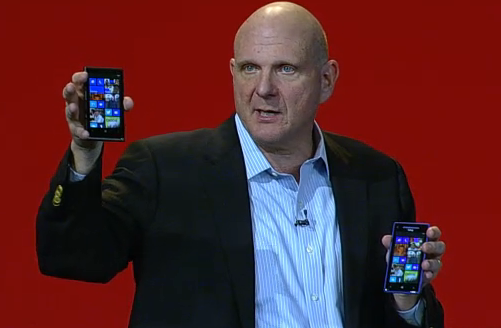Microsoft CEO Steve Ballmer Talks Windows 8 and Surface
February 26, 2013
Technology Review interviews Microsoft’s chief executive Steve Ballmer about Windows 8, which the article refers to as the most ambitious and strangest major product ever released by the software mainstay. Windows 8 was designed to run on smartphones, tablets, laptops, servers and even on supercomputers and provides users with the same interface on any device, with minor variations from one to the next.
 In order for the company to showcase all that its Windows 8 could do, it developed its own tablet, the Surface. “The response has been mixed: some critics guardedly welcomed Windows 8, praising its gorgeous graphic design and daring indifference to Microsoft’s past; still others were baffled by the attempt to impose a single user experience onto all types of computers,” writes MIT Technology Review.
In order for the company to showcase all that its Windows 8 could do, it developed its own tablet, the Surface. “The response has been mixed: some critics guardedly welcomed Windows 8, praising its gorgeous graphic design and daring indifference to Microsoft’s past; still others were baffled by the attempt to impose a single user experience onto all types of computers,” writes MIT Technology Review.
When asked why the graphical user interface is the consistent across devices, Ballmer said: “For the first time, Windows PCs, tablets, and phones, as well as Xbox, all share the same look and feel and iconic live tiles. A common visual language makes a lot of sense and helps unify the experiences people have across the devices and services they use daily. Increasingly, people access the same content and services from multiple devices or use more than one device at a time.”
Ballmer was also asked if he’s pleased with sales of the Surface tablet. “I’m super-glad we did Surface,” he said. “I think it is important — and not just for Microsoft, but for the entire Windows ecosystem — to see integrated hardware and software.”
The interviewer followed with, “Does that mean that Surface is a real business, and that you intend to be a manufacturing company in a meaningful way?”
“Surface is a real business,” responded Ballmer. “In an environment in which there’s 350 million PCs sold, I don’t think Surface is going to dominate volume, but it’s a real business.”
He talked about knowing what the consumer wants — a philosophy some consider a challenge for Microsoft. “Our number one thing is supplying products to consumers,” Ballmer said. “That’s kind of what we do. Sixty-five percent of all PCs go to the consumer, not to the enterprise. Seventy percent of all Office suites go to the consumer, not the enterprise. One hundred percent of all Xboxes go to the consumers, not the enterprise. Now, we’ve monetized the enterprise better than the consumer, there’s no question about that. And there’s no question that there are things that we have done for both the consumer and the enterprise that we would like to improve. So I’m not trying to push back. I’m merely trying to highlight that we really are very involved in both.”
“So is there a lack of understanding, or in some cases do I wish our execution had been better? I would say the latter. In cases where we’ve embraced end-user needs and really sort of dived in, like the things that we’ve done with Kinect and the Xbox, I think we’ve done a heck of a job,” concluded Ballmer.

No Comments Yet
You can be the first to comment!
Sorry, comments for this entry are closed at this time.